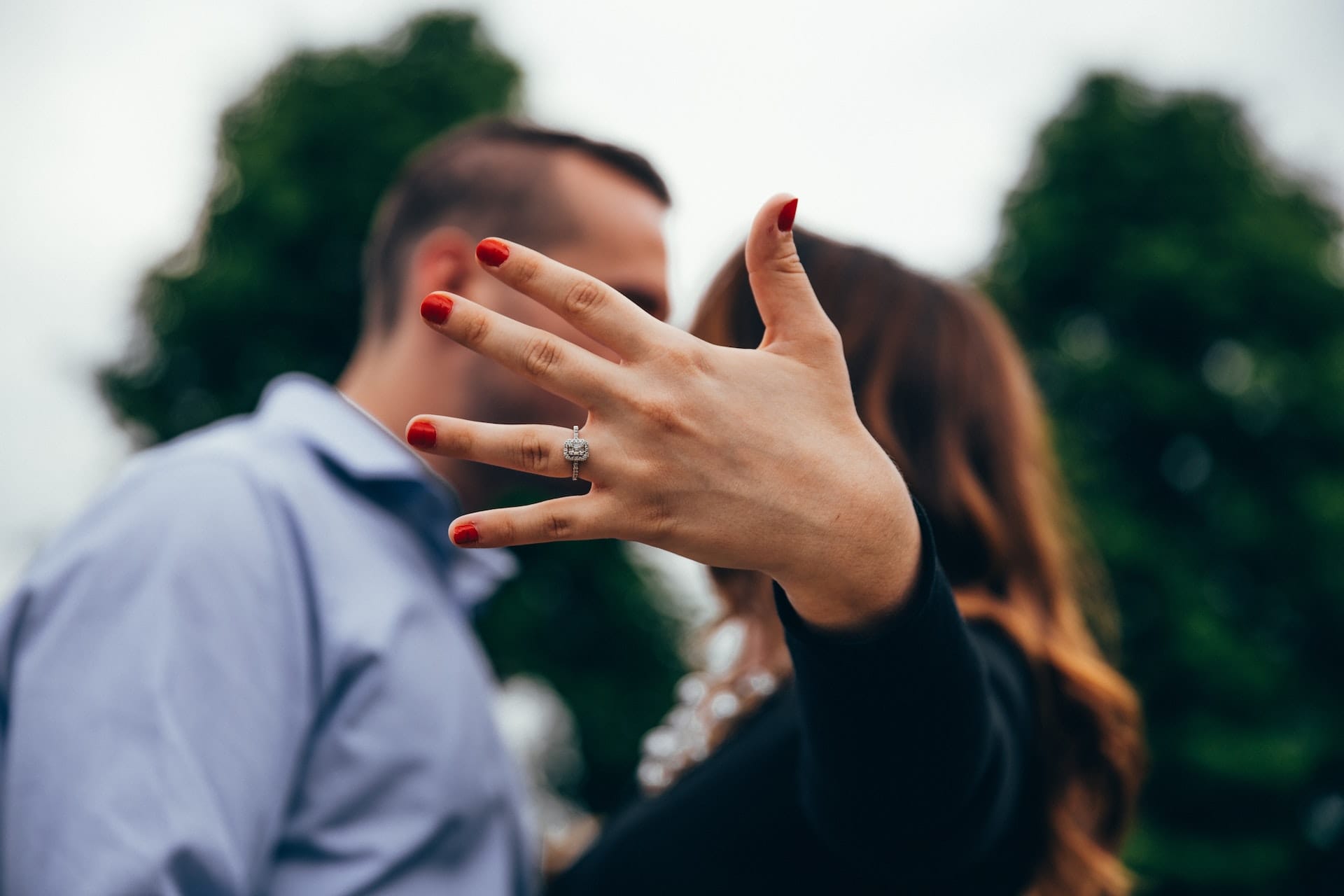
Table of Contents
If you are after a diamond engagement ring, you might agree with us that the hardest part about buying an engagement ring is choosing the diamond.
Whether you’re buying a ready-made piece of jewelry, customizing a ring with a vendor, or building your own, you will still need to choose the right diamond to complement the ring. Knowing that the diamond determines the overall look of the ring does not diminish this pressure, and you want to ensure that your loved one receives a gorgeous ring that she will love.
And considering that a diamond is a high-ticket item, often costing thousands of dollars, the last thing you want is to choose the wrong stone from the hundreds of thousands available.
Luckily, there are some steps you can take to ensure that you select a stone that works with your budget and preferences.
This step-by-step guide will cover the basics of selecting the right diamond for you.
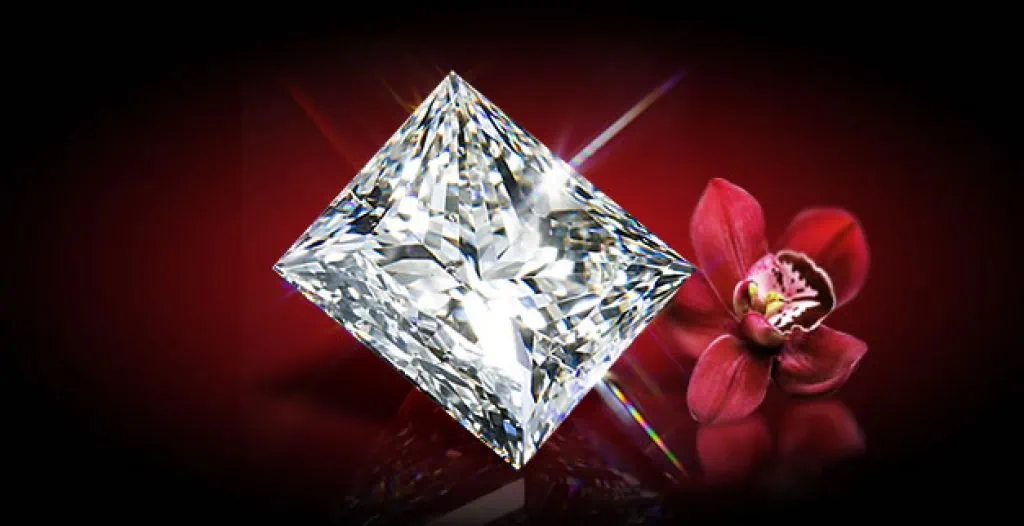
1. Decide on your budget.
Deciding on your budget is critical because it ensures you stay within a reasonable price range. It is very easy to go over your budget as you become increasingly overwhelmed with the options available to you. However, regardless of the options, if you understand the quality factors of a diamond, you’ll be able to play around with them to maximize your budget.
For more information read our article on all you need to know about the 4C’s of diamonds.
2. Decide on the shape.
Next, decide on the shape of your diamond. A point to note is that the diamond shape is different to the cut. The cut refers to the angles and facets of the stone and is a method of evaluating the diamond’s quality. The shape refers to its appearance. The most popular shapes are round, princess and cushion cuts but there are at least 10 popular shapes to choose from.
3. Decide on the carat weight.
Once you’ve decided on the shape, consider how big you want your diamond to be by deciding on the carat weight. This depends on how much you’re willing to spend and what the expectations for the ring may be. The most popular carat size is 1 carat, but if you stay just below this threshold, you may be able to get a bargain.
For larger, more impressive looking stones, you could consider going up to a 2 carat or even a 3 carat diamond. But note that diamonds increase in price exponentially dependent on weight and quality factors. Be prepared to shell out some pretty serious coin for larger diamonds.
4. Choose your color.
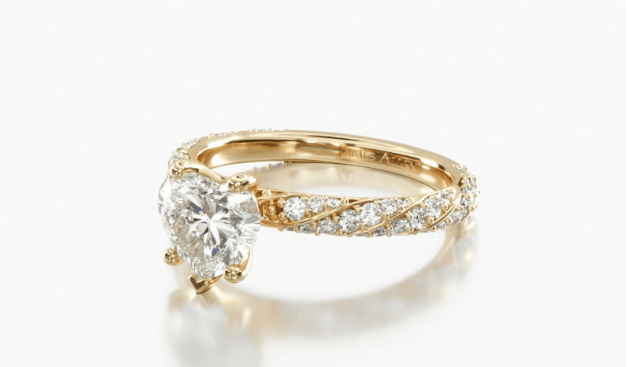
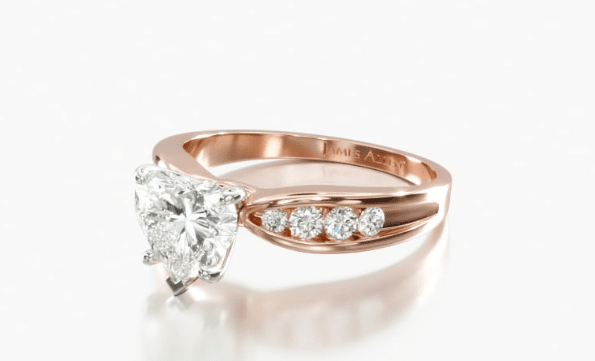
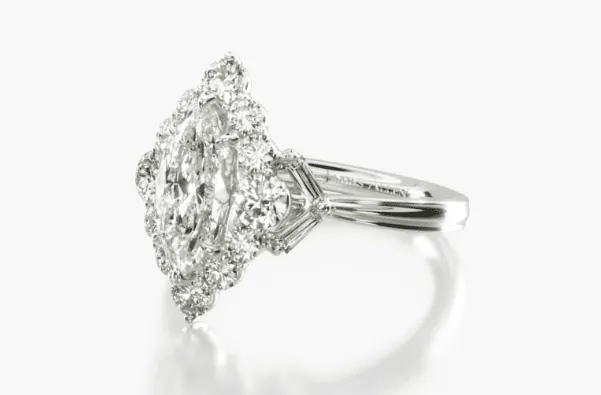
Now that you’ve decided on your budget, shape and carat, consider the color of the diamond. The general rule of thumb is that the less color in a colorless diamond, the better. This is why people tend to go for the D-F (colorless) grades.
However, there are some ways to save on this without compromising on quality. This is where you need to consider the color of the metal of the setting. If you’re going for a yellow gold setting or yellow gold basket (the part of the ring that holds the diamond) you could get away with a diamond lower down on the color scale. The color of the metal masks the color in the stone.
However, if you’re going for white metals, like platinum or white gold, then color will show due to contrast. So, you may have to choose a higher color grade.
5. Consider the clarity grade.
How important is clarity? We’ve answered this question in detail in this article – we recommend you checking it out. But the short answer is that clarity is only important as long as the diamond looks eye clean.
We love diamond clarity because it’s an easy way to cut on the cost of the diamond without compromising the look of the stone. You can lower the clarity grade to as low as VS2 or even lower before adjusting other factors. This is because VS2 diamonds are still eye-clean in most cases (no imperfection is seen with the naked eye).
There is one caveat to clarity. You have to see images of the actual diamond before you buy, because grading reports don’t tell you where any inclusions may be located.
6. Choose the cut quality.
Cut is king when it comes to diamonds. Cut will determine the brilliance and sparkle of the stone – so try not to compromise too much here.
Choose the best possible cut you can – Excellent or the retailer’s signature cut – as far as your budget allows. Note that the GIA doesn’t grade the cut quality of diamonds other than round diamonds. So, again, it’s important to see the diamond and before you buy.
While seeing the stone in person is always great, we find that the best online diamond retailers like James Allen actually offer a better deal with their superzoom and 360 degree videos. The quality of this imagery can be stunning – and because you can explore the diamond at home, without a pushy salesman over your shoulder, you might even find it better alternative to going to a store. Couple that with low prices and great after-sales policies, and we think it’s a winning combination!
7. Start your search.
For this section, let’s walk you through the best way to start your search online. We’ll be using James Allen as our example because we can say, without reservation, that they offer the best online diamond shopping experience.
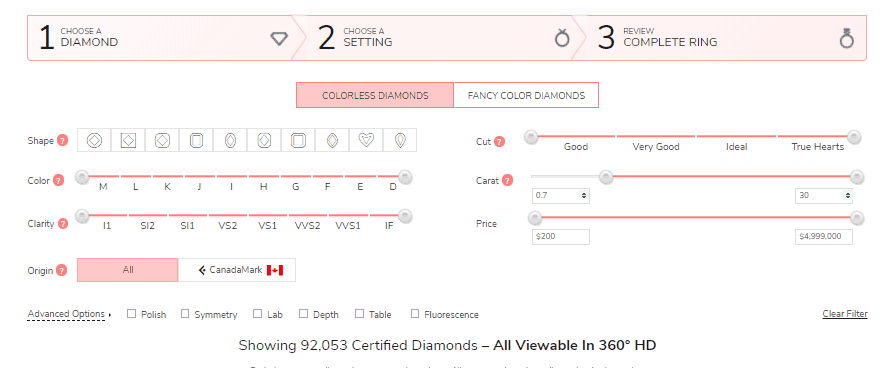
Start with the highest quality diamond. This means color grade D and clarity grade IF (internally flawless) or FL (flawless).
For cut, go with the highest option on the grade. Different retailers have different terms for their best cut, for example Signature (Blue Nile), True Heart (James Allen) or Super Ideal (Brilliant Earth). If your budget is high, you will have endless options.
Generally, though, a search for very high quality diamond against a low budget will not return many results. This requires you to start making adjustments to your search criteria. The following order yields the best results:
Clarity is the first factor to adjust to find a diamond within your budget.
The next step is to lower the color quality. As a rule of thumb, you can gradually decrease the color quality from D to G, up until color H before making adjustments to other factors.
Only set colorless diamonds (D-F color grade) on white gold or platinum. If a colorless diamond is set on yellow or rose gold, it may appear yellow. This would make it pointless paying the premium for the white diamond.
Detecting the color difference between D and H color grades becomes very difficult once the diamond is mounted and worn. If you are on a tight budget, you can limit your color grade to E-F knowing they probably will appear as good as a diamond with D color grading.
Cut is the most important factor that determines the brilliance of your diamond and should be the last factor to adjust. It is recommended not to go for diamonds below the Very Good cut grade.

If your search yields no satisfying results, decrease your carat weight by 10%. For instance, if you were targeting a 1 carat diamond, change your criteria to 0.90 carat. While not easily detected when viewed, this decrease in carat weight makes a big difference in the price.
By now, your search should be giving you some good options. If you are still not having any luck and find that you need to make further adjustments to your search criteria to gain more options, go with the following steps:
For diamonds between 1 and 2 carats you can drop to clarity grade SI1, as imperfections are not usually detectable with the naked eye. For diamonds less than 1 carat, clarity is the least important factor and you could probably drop down to SI2.
For diamonds under 1 carat, you can go as low as I-J color grades for a diamond that would appear colorless mounted on a white gold or platinum ring. If it is an option, consider setting the diamond on yellow gold and safely drop the color grade to K.
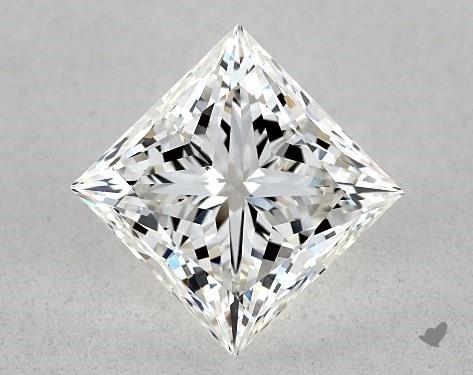
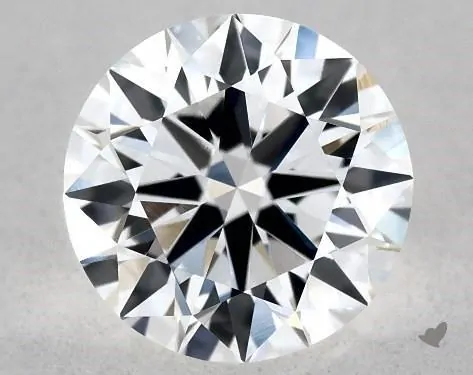
Round and princess shapes are the most brilliant, due to their high number of facets. As they reflect light brilliantly, these shapes are better at hiding yellow tins of diamonds. This means you can target these shapes and drop your color grading even further.
If the carat weight is your primary concern, consider buying a shape that will create the illusion of appearing larger than other shapes of the same carat weight. For example, the marquise cut appears larger than other diamond shapes of the same carat size.

Some diamond shapes are cheaper than others. The princess cut is one of the most affordable cuts as its shape allows for higher yield of the rough diamond. And yet this doesn’t mean that it compromises on brilliance and beauty. The round brilliant, on the other hand, is the most expensive shape, as it’s in high demand, wastes a lot of diamond rough, and is highly brilliant.
Fluorescence is another factor that can help you budget. While generally seen as a disadvantage, in white diamonds it can actually be an advantage. It can create the illusion of the diamond appearing whiter. The additional bonus is that this will allow you to drop down on the color grade scale (again a way to drop the price) as the fluorescence will offset the tints in the diamond. But ensure that you view the diamond to find the perfect balance between the fluorescence and the color.
In Conclusion
At this point in your search, you will hopefully be coming up with many diamond to choose from, within your budget and search criteria. It is time consuming and can be stressful, but by making calculated decisions and changing the combinations of the 4Cs, you will be able to shave off several hundred dollars off the price of your stone and cherry pick the ideal diamond for your ring.









